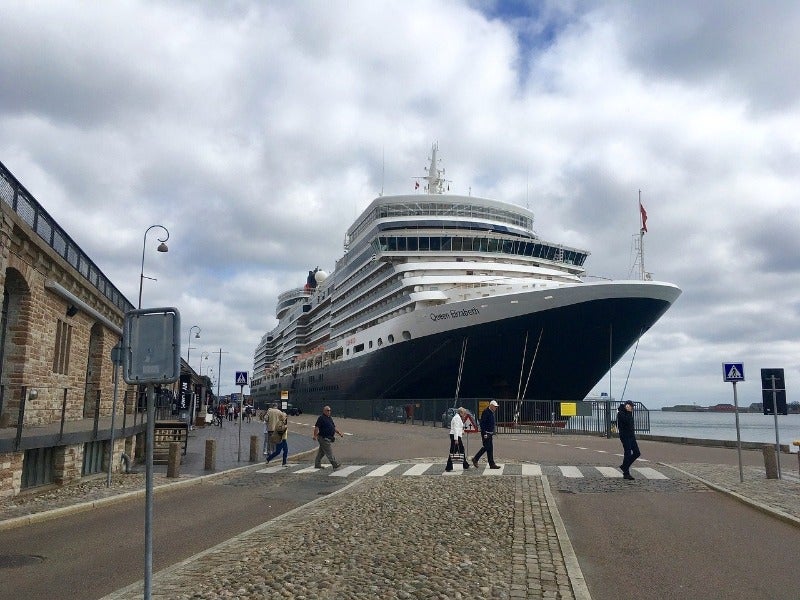
Before the Coronavirus crisis temporarily shut down the cruise industry, the number of passengers choosing to cruise in the Baltics region was growing every year.
According to the Cruise Baltic Market Review, the Baltics region has seen an increase of 17% of guests since 2017, and a record number, 5,909,784, visited ports in the Baltic Sea in 2019, a 9.1% increase on 2018.
“The Baltics has experienced a huge rise in visitors from UK cruisers over recent year,” says Cruise Lines International Association (CLIA) UK and Ireland director Andy Harmer. “Offering the chance to explore beautiful cities, each rich in history and culture, and with the ability to set sail from a UK port, the Baltics has become one of the most popular ex-UK itineraries.”
Author of the review and Cruise Baltic director Claus Bødker points out that cruise guests are highly attracted to the variety offered by each of the ten countries around the Baltic Sea as they all have their own unique culture and identity.

“It is the only place in the world, where you are able to visit five different capitals on a one-week cruise,” he says. “In addition, the Baltic Sea is very safe with very low crime rates, and most speak English. All these factors contribute to the high evaluation scores from the cruise guests.”
Windstar’s director of product development Kelly Hubbard, describes the Baltic as a “new region” that many cruisers are exploring after more traditional markets like the Mediterranean.
“It offers very different shore experiences than in the Mediterranean, as well as more hidden harbours and off-the-beaten-path ports,” explains Hubbard.
“Also, the area cruise agencies, such as Cruise Baltic and Cruise Norway, are bringing a lot of awareness through marketing and also providing FAMs for cruise lines to come and experience the region and all it has to offer,” she adds. “These certainly motivate us to include these experiences in our deployment after seeing them first-hand.”
Baltic cruise market: passenger growth and port expansion

The top five most visited ports in the Baltic region are Tallinn (with 656,000 guests in 2019), Stockholm (656,443), St Petersburg (666,235), Kiel (803,000) and Copenhagen (940,000).
Back in 2014, to meet with demand, the Port of Copenhagen expanded to create three terminal buildings with a pier that allowed space for three large cruise ships along a dedicated cruise quay. A further increase in passenger traffic prompted plans for a 4th terminal building that was due to open in 2020.
“A new terminal, designed for more than 5,000 passengers, will enable us to receive more and bigger ships in future,” says Copenhagen Malmö Port CEO Barbara Scheel Agersnap. “With this development, we are making sure that Copenhagen retains and develops its position as the leading cruise destination in Northern Europe.”
In 2019, Stockholm had a thriving 6% growth rate, which was predicted to rise at least a further 2% in 2020. Port of Stockholm cruise and ferry manager Stefan Scheja says the city’s rich history and selection of museums and restaurants combined with the friendliness of its citizens are hard to beat. But what impact does he think the coronavirus will have on the port and passenger numbers in the future?
Scheja says the severity of the impact will depend on the length of the no-cruise period and the economic situation for cruise passengers, and their willingness to travel again.
“The port activity regarding pre-planning and set up for the cruise season are pushed forward every day and follow the cruise companies cancellations,” explains Scheja,” adding that they are prepared should there be “some kind of cruise season” in the Baltic Sea in 2020.
“I hope we will get back some kind of a ‘normal’ cruise season in 2021 and the tourists will start returning in general to Stockholm,” he continues. “Sustainability is very important and I hope we will manage to continue all our planned activities, despite the influence of Covid-19, to reach our goals during the next decade.”
With the small ports experiencing considerably strong growth in 2019, the greatest impact could be on several of the medium-sized ports (Aarhus, Aalborg, Skagen and Rønne) where passenger traffic had decreased by 14% in 2019 but was expected to increase by 33% in 2020.
Will cruise passengers return to the Baltic region?

The cruise industry had been growing steadily year on year for the last twenty years – from 17.8 million in 2009 to 32 million in 2019 (CLIA). The halt on cruise operations is unprecedented and at the time of writing many cruise lines have extended their suspension of departures into May and June. The impact will be felt in the industry all over the world for years to come. But what might happen to the growth of the Baltic region?
One of Bødker’s fears is that passengers will change behaviour after the health crisis is over. “Maybe Americans will prefer to stay at home instead of sitting close in a plane to Europe and then be with thousands of other cruise guests on a cruise vessel,” he suggests.
It might not be bad news though because it was recently reported that CruiseCompete.com, an online marketplace, saw a 40% increase in bookings for 2021 compared with 2019. This indicates that the appetite for cruising once the public has the go-ahead to cruise again.
As the Baltic Sea is close to two of the world’s largest cruise markets, the UK and Germany, Bødker thinks that recovery from this part of the world could be stronger. “The Baltic Sea region has become more and more popular among these two nationalities in the pre-Corona period, so hopefully the Brits and Germans will do cruises relatively quickly in the Baltic Sea, when all the health restrictions have been removed.”



